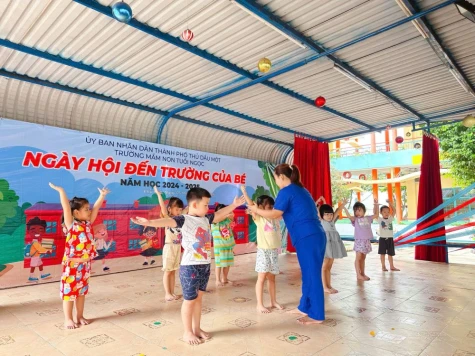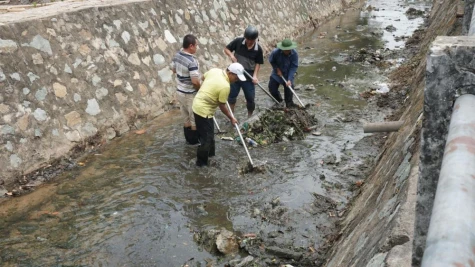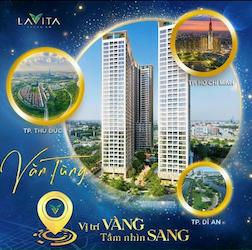Part 2: Delivering specialized healthcare at district Level
To address the needs of seriously ill patients and manage urgent and critical emergency situations, district and city medical centers in the province have enhanced and refined their specialized capabilities. As a result, numerous new and specialized techniques have been implemented by these centers, enabling patients to receive treatment directly at the facility without the necessity of transferring to higher-level institutions.
Implement numerous innovative techniques
Recently, residents of Thuan An City and surrounding areas were pleased to learn that the Thuan An City Medical Center successfully conducted endoscopic surgery on a patient with a significant ureteral stone located near the renal pelvis. This contemporary, minimally invasive technique for treating urinary stones is typically carried out in larger hospitals equipped with advanced technology; however, it has now been successfully implemented at the district medical center.

In addition to employing this technique, Thuan An City Medical Center has consistently implemented numerous complex, specialized, and advanced procedures in recent times. Notably, these include obstetric laparoscopic surgeries (morphological ultrasound, partial and total hysterectomy), surgeries for various types of large bone fractures, fluoroscopy-assisted bone surgeries, and the provision of artificial kidneys. Significantly, the center has taken over the role of the Provincial General Hospital in supplying and supporting blood for affiliated units both within and outside the public sector, and it is the first institution to successfully secure contracts for medical equipment packages aimed at enhancing medical examination and treatment services for the community.
The sector is committed to standardizing qualifications, ensuring that by the end of 2025, there will be no staff with intermediate qualifications. It aims to collaborate with both domestic and international universities to train medical personnel with university and postgraduate degrees. As part of the comprehensive development project for the health sector in Binh Duong province, which extends to 2030 with a vision for 2050, plans are underway to establish a new health university in the province. The initiative includes the development of a 1,500-bed Provincial General Hospital and a 2,000-bed specialized hospital as training facilities. The province will establish two universities focused on healthcare (both public and private) to supply human resources for the local and regional needs, and upgrade Binh Duong Medical College to a university. Eastern International University and Thu Dau Mot University are currently training general practitioners, and there is encouragement for the establishment of a private university dedicated to health sector training in Thu Dau Mot City, Ben Cat City, or Bau Bang District. |
Dr. Huynh Minh Chin, Deputy Director of the Department of Health and Director of the Thuan An City Medical Center, stated that the leadership and staff of the Thuan An City Medical Center are consistently focused on enhancing the quality of community health care. “The center prioritizes the implementation of various innovative techniques, leveraging technology transfer projects tailored to local needs, prevalent diseases, and available human resources. Additionally, the center emphasizes the training of human resources. Currently, it is the only facility recognized as meeting the standards of a grade 2 hospital, achieving over 87% compliance with the technical categories established by the Ministry of Health, the highest among the nine district and city medical centers in the province,” Dr. Huynh Minh Chin remarked.
In conjunction with the robust advancement of Thuan An City Medical Center, Tan Uyen City Medical Center has also made significant strides forward. The facility has been equipped with modern medical infrastructure and technology, supported by a team of highly specialized doctors and healthcare professionals. Over the past year, the center has successfully delivered emergency care and treatment to numerous patients facing severe, complex, and critical conditions, including cardiac arrest, emergency cardiac stroke, cerebral stroke, and acute pulmonary edema. Notably, the center has implemented various innovative clinical and paraclinical techniques, such as bone fusion surgery, the placement of single-lumen and multi-lumen central venous catheters for shock resuscitation, pleural fluid drainage, orthopedic trauma surgery, tendon repair, skin flap reconstruction, as well as 3D-4D ultrasound and vascular ultrasound, while also offering specialized technical services.
Additionally, five health stations in the wards and communes of Tan Uyen City—Vinh Tan, Phu Chanh, Tan Vinh Hiep, Tan Phuoc Khanh, and Bach Dang—have been newly constructed and upgraded. All health stations have doctors regularly on-site, and by 2030, 100% of communes and wards will meet the National criteria for commune health, achieving advanced status in traditional medicine as per the standards set by the Ministry of Health.
Continue to enhance quality
In its capacity as a technical transfer unit, the Provincial General Hospital has recently established numerous working groups dedicated to training and transferring techniques. Many physicians have traveled to lower-tier facilities to provide direct, hands-on training, enabling local doctors to independently perform surgeries and manage complex cases. This initiative allows patients to receive care locally, eliminating the need for costly and time-consuming travel to higher-level facilities. Over the past year, the hospital has facilitated technical transfers to Tan Uyen City, Di An City, and Phu Giao District, covering 16 topics and conducting professional activities and seminars for over 3,900 medical personnel.

Dr. Nguyen Hong Chuong, Director of the Department of Health, stated that in recent years, the quality of medical examination and treatment has garnered significant attention and enhancement from the industry. The entire sector consistently emphasizes ongoing training and the development of specialized and advanced teams; invests in high-function medical equipment and techniques; and implements new, increasingly sophisticated and modern clinical and paraclinical methodologies.
According to the leaders of the Department of Health, several specialized hospitals have recently been established in the province. The number of hospital beds has steadily increased, rising from 17 beds per 10,000 people in 2010 to 20.3 beds per 10,000 people currently. However, in light of the province's socio-economic development pace, the ratio of hospital beds per 10,000 people remains inadequate; there is a persistent shortage of human resources and medical equipment for examinations and treatments. The ongoing overcrowding in hospitals continues to significantly impact the working capacity of medical staff, resulting in insufficient time for patient consultations and care, as well as limited opportunities for research and professional exchange, ultimately affecting patient satisfaction and the growing demand for healthcare services.
Emphasize training at the grassroots District and city units consistently prioritize training to develop a team of highly qualified personnel that cannot be recruited externally. From 2016 to 2020, these units trained 323 general practitioners, 20 traditional medicine doctors, and numerous preventive doctors, dentists, laboratory technicians, pharmacists, and midwives. It is anticipated that by the end of 2025, 197 graduates will be allocated to units within the sector. Over the years, the provincial health sector has facilitated training programs, nurtured talent, and dispatched students to esteemed medical institutions, including Ho Chi Minh City University of Medicine and Pharmacy, Pham Ngoc Thach University of Medicine, and Can Tho University of Medicine and Pharmacy. Notably, the sector has also sent hundreds of physicians with Specialist I, Specialist II, and master's degrees for postgraduate training. |
To be continued...
Reported by Kim Ha - Translated by Vi Bao

























